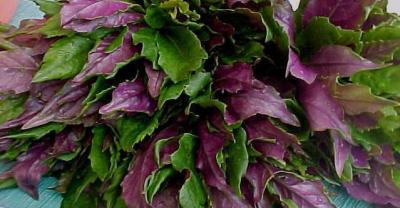The "past life" of common fruits and vegetables

When you eat a piece of watermelon or a piece of corn
Think about it.
These fruits and vegetables that we are used to seeing on weekdays
It didn't have to be like this before.
Here are some things that we are very familiar with.
But food that has changed beyond recognition.
What is this bearded plant?

Is it a kind of medicine?
actually,
These are wild carrots!
The earliest carrots were grown in Persia and Asia minor in the tenth century.
They were purple or white.
The root is small and forked.
But then...
Their purple pigment slowly faded and turned yellow.

People treat those with small roots
Pungent, two-year-old carrots have been improved
Turned them into the thicker and brighter colors they are now.
Crops that taste "crunchy"

What is this round guy?
It looks like grapefruit.
It's the grandparent of eggplant. Oh, wild eggplant is prickly.
Today's eggplant is attached to its flowers.
Wild eggplant comes in a variety of colors, including white, blue, purple and yellow
Some are even round.
It's not what oval eggplant looks like today.

After seed selection and cultivation
The thorns on the eggplant stem no longer exist.
It has become a bigger volume that we can buy in the vegetable market today.
Oval purple vegetables

This green plant is sure to surprise you.
Because it's wild corn.
Does it bear no resemblance to modern corn?
North American sweet corn is perhaps the most typical example of seed selection and cultivation.
They are cultivated from a barely edible ruminant plant.
Humans first began to cultivate corn in 7000 BC.
The corn was dry at that time.
It looks like an untreated potato.
Today's corn is more than 1000 times larger than it was more than 9000 years ago.
Easier to peel and easier to plant.
The sugar content of modern corn has reached 6.6%.
The sugar content of wild corn is only 1.9%
Half of these changes have occurred since European colonists began to cultivate corn in the 15th century.
This is a 17th century Italian painter.
Giovanni Stanki (Giovanni Stanchi)
A painting of
The plants in the lower right corner should be easier to identify ~ yes.
It's a wild watermelon.
This is a painting from the 17th century
It shows the appearance of the seeds inside the watermelon at that time.
Compared with wild watermelon, modern watermelon
More similar in appearance
There is plump and juicy red flesh on the inside.
And in fact,
The pulp of a watermelon is its placenta.
And some watermelons are seedless.
What is this fruit full of holes?
It's actually a wild banana.
The earliest bananas cultivated by human beings have a history of at least 7000 years.
Or earlier.
Can be traced back to 10,000 years ago
The ancestors of these bananas were first planted in what is now Babu.
There are also in Southeast Asia
Today's bananas are made from two varieties
Small fruit wild banana and wild banana evolved.
These two kinds of bananas have large seeds
And it's hard, just like in the picture.
Hybrid technology has cultivated today's delicious bananas.
Their shape is more convenient for people to take, and the skin can be peeled off directly.
It tastes soft and waxy and sweet
Peaches used to be small fruits like cherries today.
There is little flesh.
In about 4000 BC
The ancient Chinese were the first to plant peaches.
The peaches at that time smelled of dirt.
It's a little salty, and it tastes like lentils.
After thousands of years of seed selection and cultivation
Today's peaches are 64 times larger than their original form.
The content of fruit juice is 27% more.
Sweetness increased by 4%.
Source: ecological China Network operator: Tang Jun MX002
- Prev

The value of medicinal vegetables in daily life, celery, rape, cauliflower
We can not live without "eating, drinking, sleeping, clothing, food, housing and transportation". It can be seen how important "eating" is to us. What to eat, how to eat, how to eat.
- Next

Instructions on the use of pesticides to control common diseases and insect pests in 12 kinds of vegetables
Biological prevention of downy blight diseases (downy mildew, late blight, white rust, Phytophthora root rot, etc.): Pythium olivum / Trichoderma / Bacillus licheniformis / berberine +.
Related
- Where is it suitable to grow horseradish in China? it is expected to see the middle altitude horseradish in Alishan.
- How to prevent tomato virus disease reasonably? (Control methods included)
- Many people like to plant towel gourd on the balcony. What are the main points of this method and management?
- What crops can chili peppers be mixed with?
- Fertilization techniques and matters needing attention in Tomato
- What are the grafting techniques for peach seedlings in spring?
- Harm and control methods of root swelling disease of Chinese cabbage
- What are the pests of sweet potatoes? How to prevent and cure it?
- Symptoms, causes and Control methods of navel Rot in Tomato
- The cause of "Cucumber rotten bibcock" in Farmers' planting Cucumber and its Control Plan

